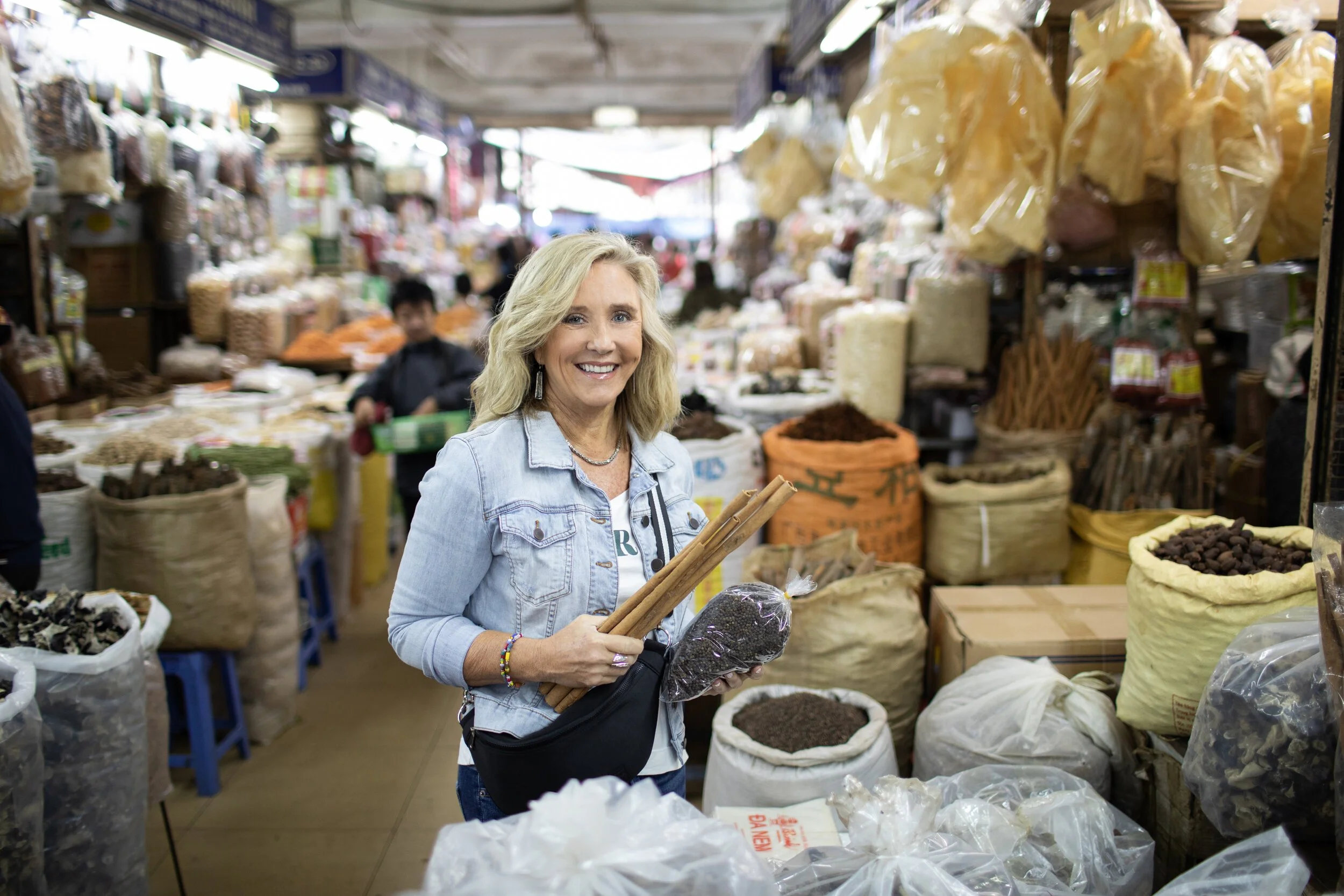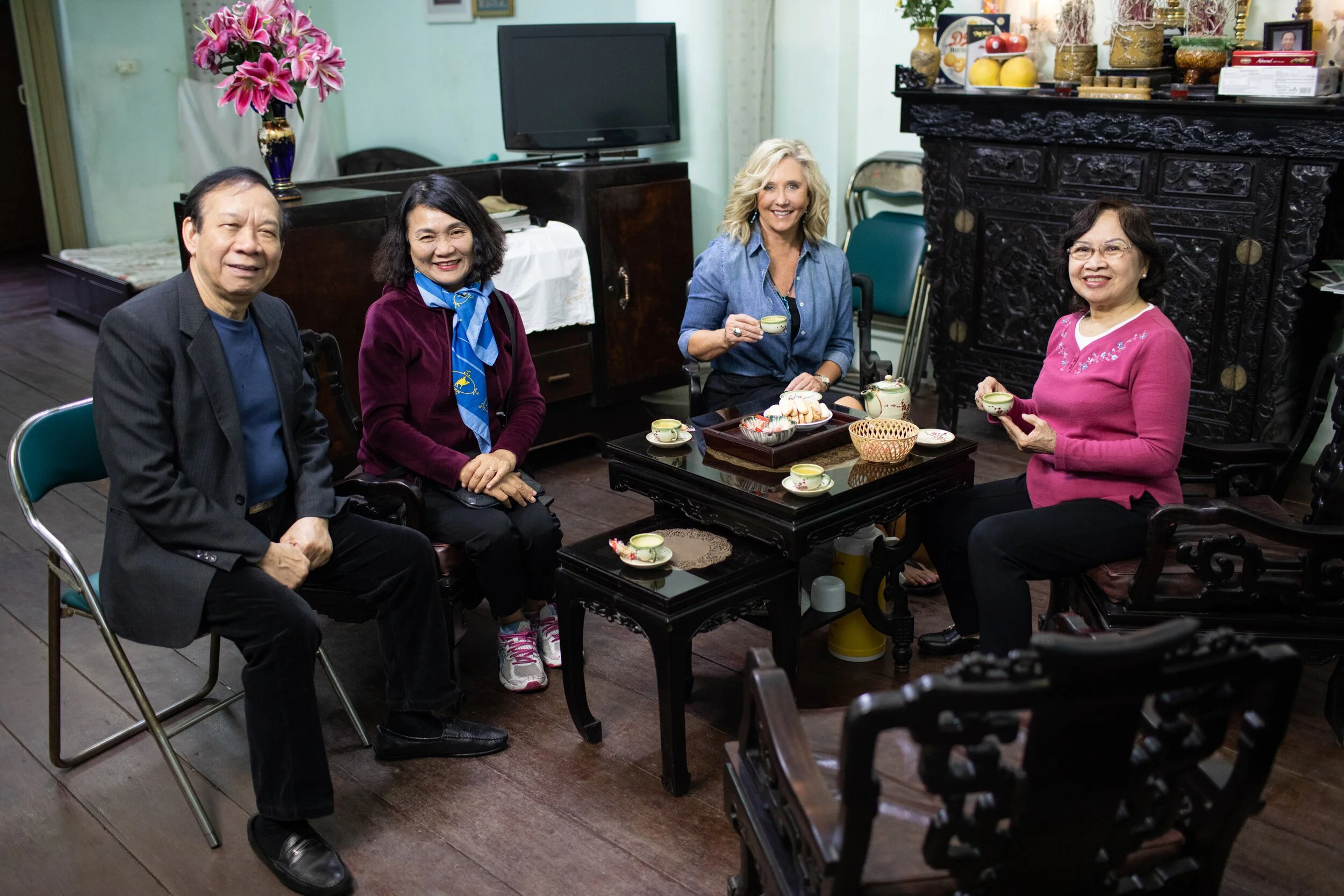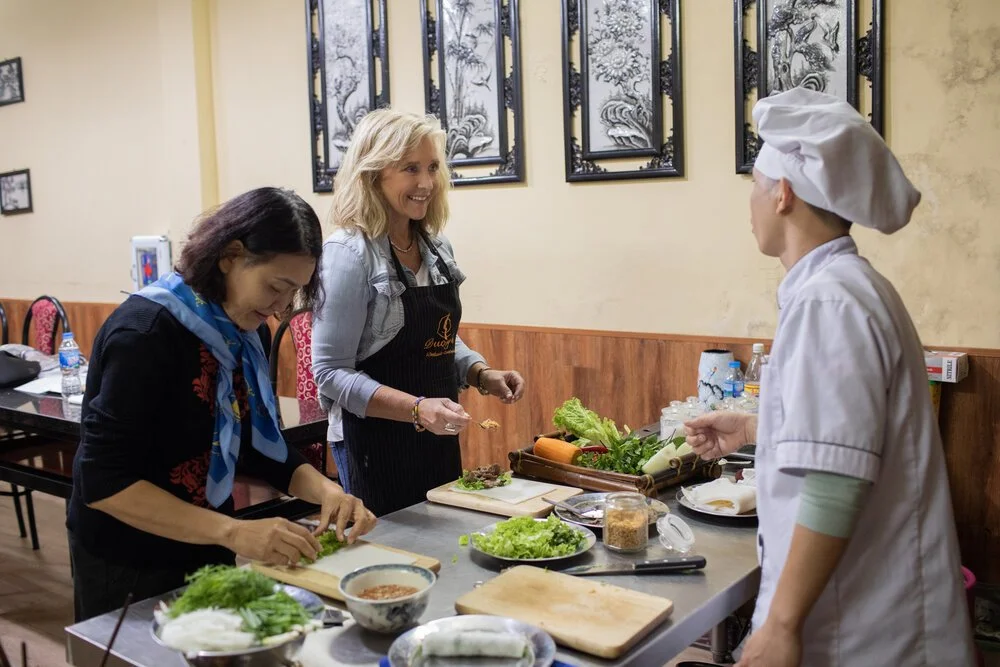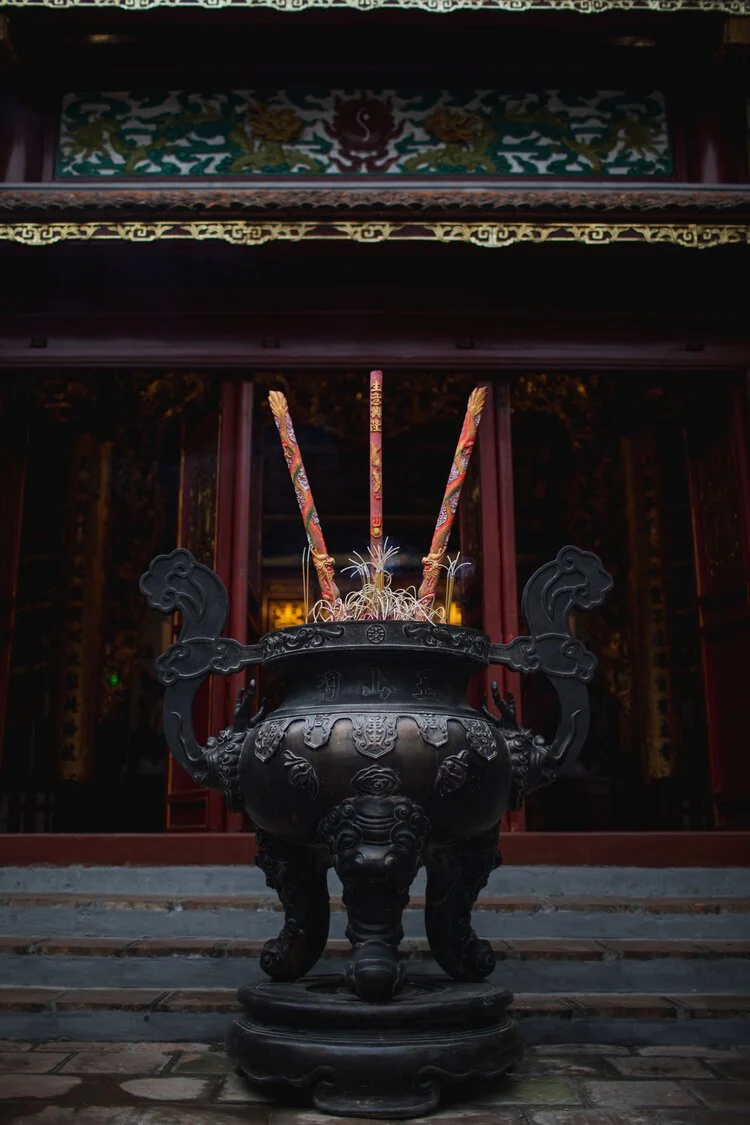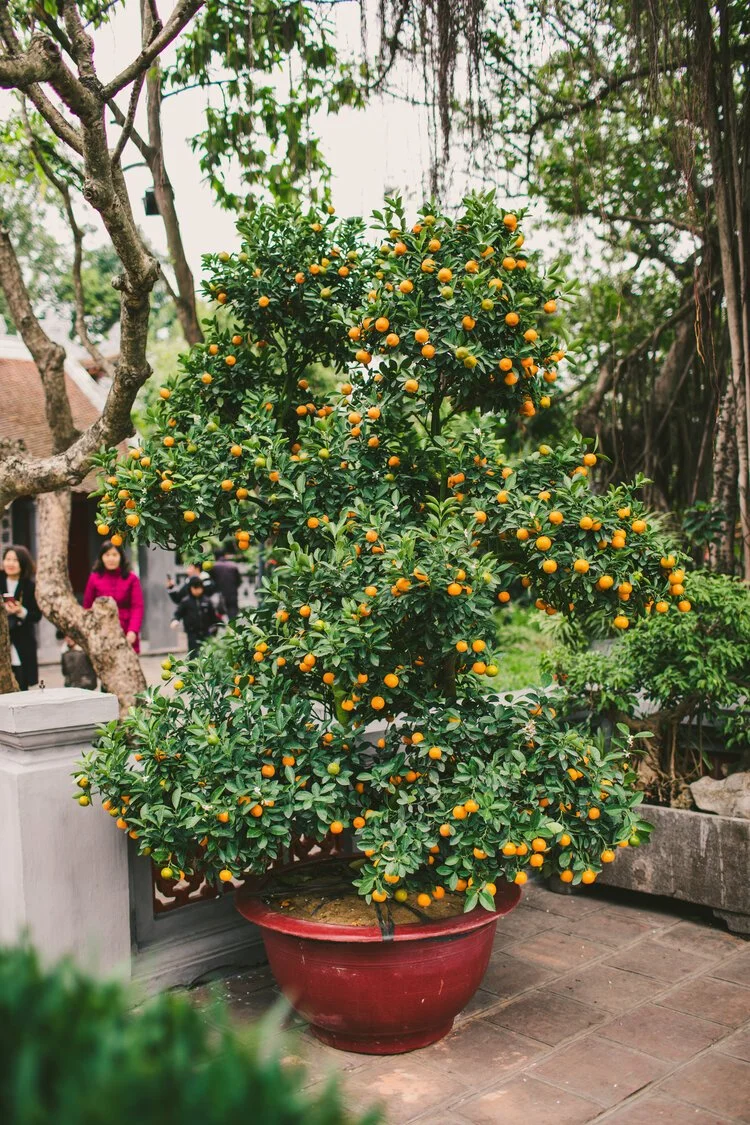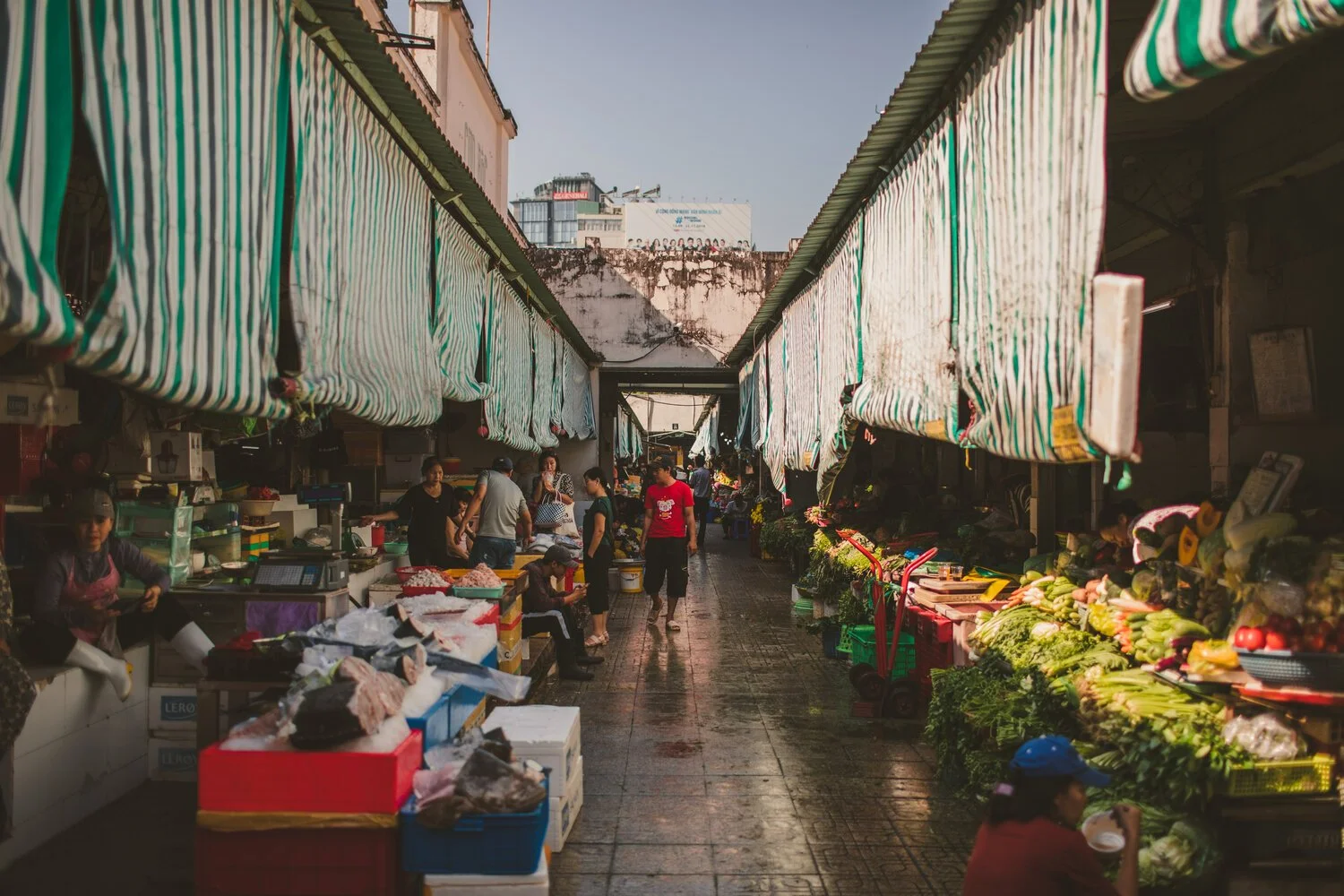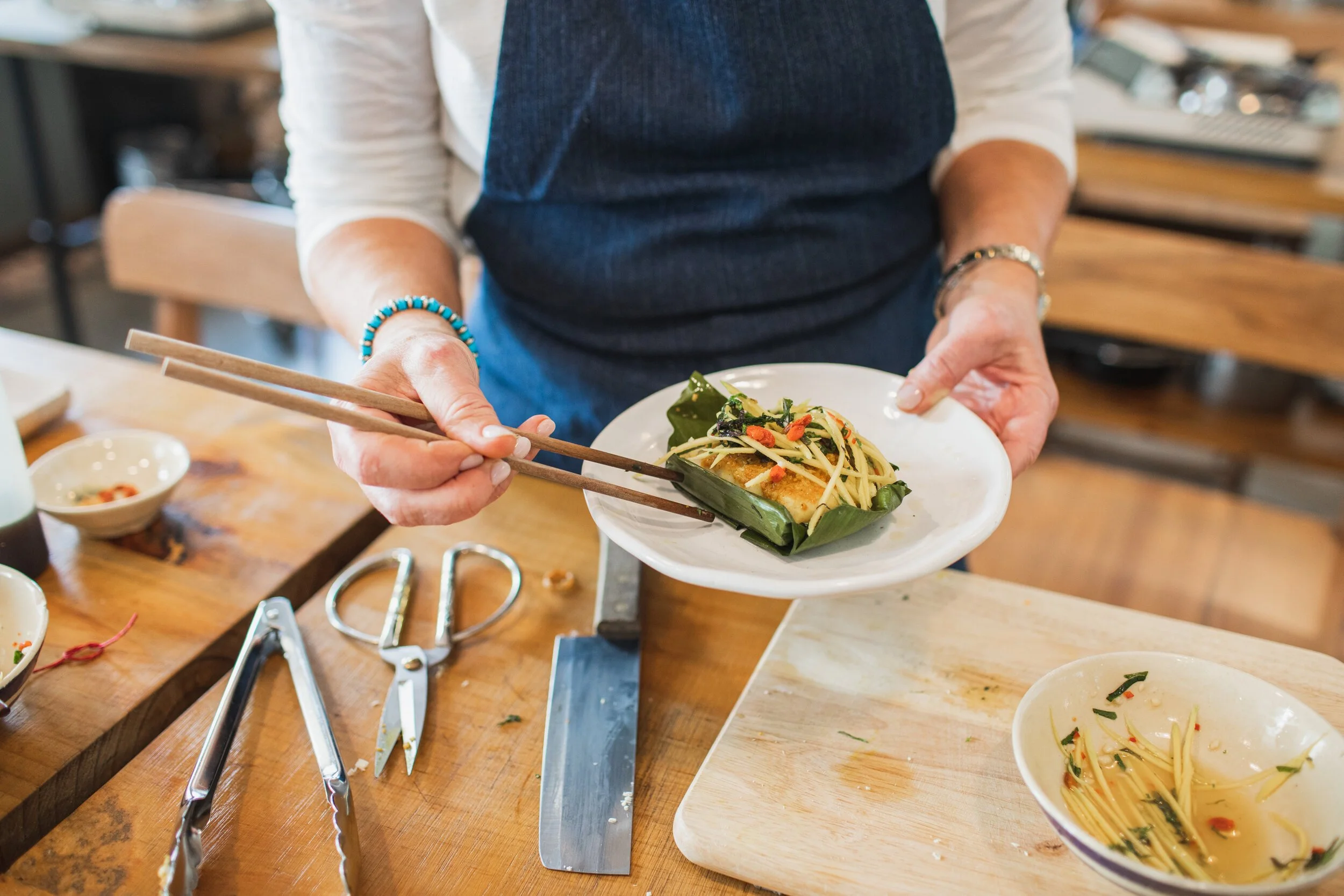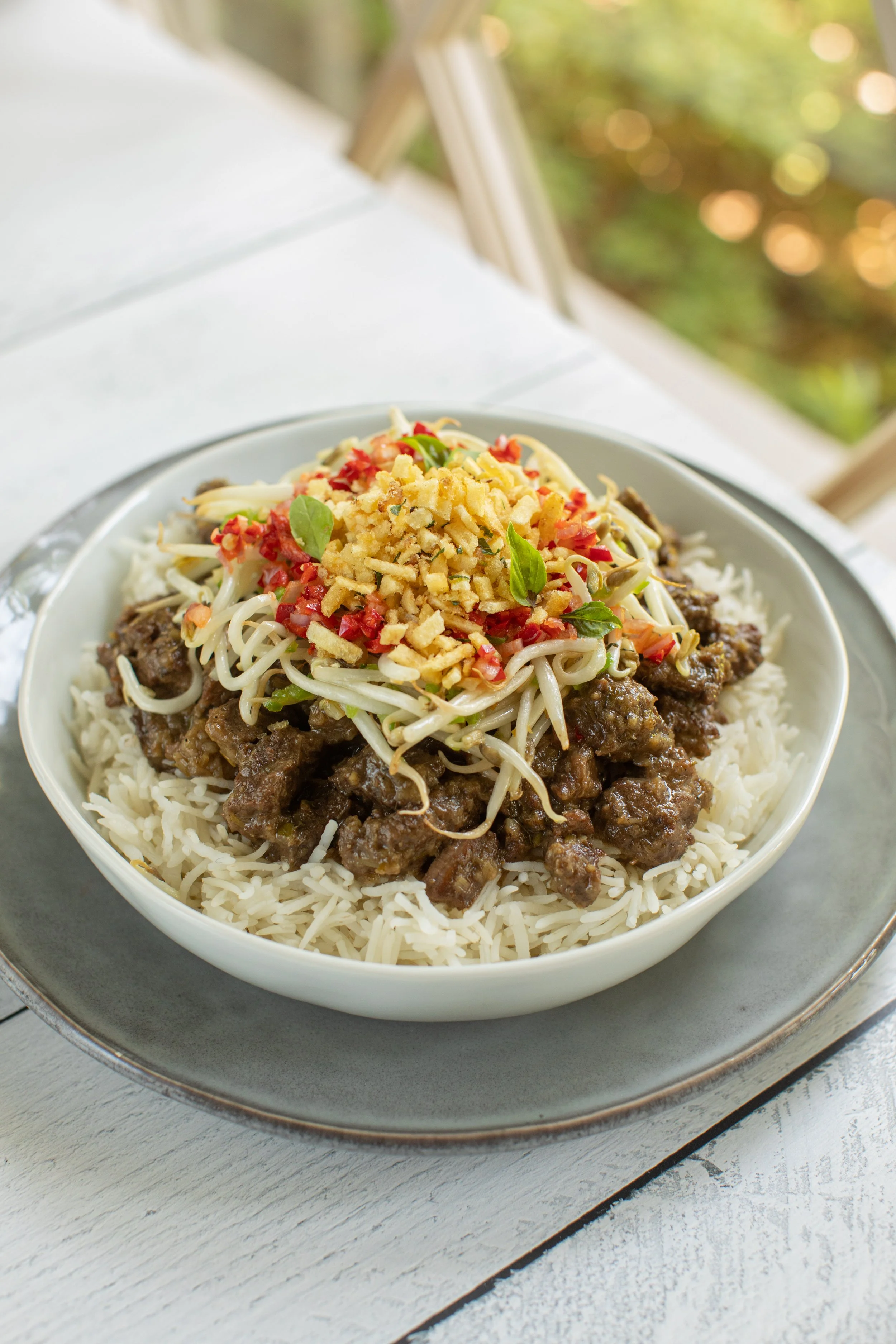Vietnam: Chopsticks and a Vespa Ride
Southeast Asia has long been a fascination for me. Exploring food markets, bustling cities, rural farms, and cooking with chefs who have been making traditional dishes their entire lives. The perfect place to start was Vietnam. I traveled with my friend and photographer, Valerie, who was eager to capture the beauty of our trip in her photos.
We started in the capital city of Vietnam, Hanoi, a French Colonial city built on the banks of the Red River. Our guide, Lilly showed us around for three days. On our first day we visited the home of a Vietnamese family of four generations who lives in a three story home above a convenience store. We were served tea from dried lotus leaves and tiny candies made with peanuts while they told us what it was like living in the city for over seventy years. They were both retired school teachers, but Chi, the father, was still tutoring children in their home. He also collected cuckoo clocks, and they were hanging in many different places around the house.
He pointed to a wall covered with plaster patches that had been destroyed by a bomb during the “American War” in 1969. His mother, the matriarch was 94 years old, and slept on a tiny mattress next to the living area, while the rest of the family sleep on the other floors of the house. Chi’s wife showed us her small kitchen where she prepares three meals a day for her family. There were small pots of herbs growing in the window and a tall vine trailing up from a pot on the ground floor through an opening in the middle of the house. There was a chalkboard on the wall in the kitchen where Chi taught his students when they came for tutoring. We bid our farewells with lots of bows before returning to the busy street below.
We walked to the Thanh Tri Market where we met Chef Ngoc, who would show us around the food stalls, noodle shops, spice vendors, and rows of vegetables and fruits. It happened to be a holy day in honor of “the kitchen god”, so many people were buying offerings of sticky rice cakes and paper currency to put on their alters so their kitchens would be blessed. After collecting ingredients for our cooking lesson, we walked to Ngoc’s home, which was also a multi-family compound with a garden and outdoor kitchen in the center. We spent the morning making pho bò, the traditional beef and noodle soup with basil, bean sprouts, ginger, and lemongrass.
We also made bánh cuôn, little rice pancakes stuffed with pork, mushrooms, fish sauce, and onions. We made pancakes from rice water that was quickly ladled on a tight sheet of fabric over a steaming pot of boiling water. We swirled the batter with the underside of the ladle like a crepe, and it cooked in about thirty seconds. Using a long chopstick, we removed it from the cloth to an oiled banana leaf. The pork stuffing was added, and we rolled them up like little white sausages. We all sat down to eat our hot bowls of pho bò and bánh cuôn rolls topped with fried shallots and mint. It was a chilly day, so it made for a perfect lunch.
Lilly took us to a famous coffee shop in the center of Hanoi called Cafe Dinh where they are famous for their egg coffee, which was invented by the cafe owner. We had to walk through a narrow corridor in a shopping strip, and up two flights of concrete stairs to get to the shop. The room was filled with people sitting on short stools sipping coffee and tea. We watched them make egg coffee by blending an egg yolk with sweetened condensed milk for a long time until it is thick and frothy. Then it is poured over a cup of very strong Vietnamese coffee. When it’s stirred, it tastes sweet and delicious, like nothing I’ve ever tasted before. Valerie ordered a coconut iced coffee which was also delicious.
A visit to Hanoi isn’t complete without walking the streets lined with food stalls, tea cafes, and silk shops. But one of my favorite streets is called Tin Street. It has countless shops that make everything out of tin, including cooking tools, barbecue grills, alters for burnt offerings, and anything you need for your home made out of tin. I found a ladle similar to the one we had used in the cooking class that morning, but I wanted it to have a bamboo handle instead of tin. The shopkeeper took my ladle and cut off the handle, drilled holes, and inserted a stick of bamboo. Exactly what I wanted!
Our second day in Hanoi we went to Duong’s Cooking School where Chef Peter taught us to make Pho Gà (chicken pho), fried fish “Lã Vong Style”, noodle spring rolls, and beef cooked in bamboo stalks over a fire. While we waited for our pho broth to simmer, we took a rickshaw ride to the market where Peter showed us more Vietnamese produce and spices. I bought a kilo of Vietnamese black pepper and cinnamon to take home. After several hours of cooking with Peter, Valerie and I were feeling pretty confident we could make delicious pho when we returned home.
Our last night in Hanoi was spent with a local food guide named Thao. She told us stories of growing up in Vietnam poor with very little to eat. Her father was communist and had to go to war when she and her two siblings were very young. They didn’t see him again for ten years. Her mother was poor and the only meat they had was 1/2 kilo of pork belly that was mostly fat. She used it for a week to feed the children. Thao’s stories were very emotional. We walked for three hours through Hanoi where people were outside eating everywhere. Thao explained that many families have very small kitchens, and it’s easier and less expensive to buy food from the street vendors to feed their families.
Many of the cafes were run by multi-generational families. They lived upstairs or behind the restaurant (often the size of a closet). The most common food was pho, and we ate beef pho that was steaming in a huge pot outside a cafe. Three guys worked to fill orders by putting the beef, noodles, and veggies into the bowl while the others ladled the hot broth on top. We also had a dish made with poached shredded chicken topped with noodles, herbs, and fried shallots. It was similar to pho, but without the broth. A spicy vinegar dressing went on top, and we agreed it was one of our favorite dishes. There was a sticky rice cake stuffed with fermented beans and pork belly. The rice was a very special variety and the woman who owned the shop in front of her house sat on a stool every day with a large clay pot full of the rice, covered with a heavy blanket. It kept warm all day while she scooped it out with her hands and formed the soft rice into cakes for her customers.
Our last stop was in a tiny shop where we sat on low stools at a table full of bowls. They were filled with herbs, bean sprouts, peanuts, sauces, and chiles. They placed a hot pot in the middle of the table with hot duck broth and gave us a plate of very thinly sliced duck. We used our chopsticks to dip the hot duck into the broth and eat with the condiments. It was delicious.
We couldn’t leave Hanoi without walking around the beautiful lake Hoan Kiem in the middle of the city. We walked over the red bridge to the Ngoc Son temple where there was a beautiful view of the city. A Vietnamese man was painting gorgeous calligraphy while worshipers were in the brightly decorated temple.
It was time to travel south to Ho Chi Minh City (Saigon) where we experienced a much busier city, and much more traffic. We were met by our guide, Chuong who took us on a Vespa motorbike tour of the city at night. We were each on the back of a Vespa while our drivers wove through the crazy traffic of cars and other motorbikes. It was exhilarating! We stopped at three different street food stalls where we ate fried fish, frog legs, clams, and the famous bánh xèo, which are very thin rice crepes cooked quickly in a wok with shrimp and crab meat. There were four women standing over woks stirring and flipping the bánh xèo as quickly as the orders came in. Once we were seated, we were told to crush the pancake with our chopsticks and stuff it into lettuce wraps with spicy vinegar sauce. They had such interesting texture and flavor!
Our last ride through the city led us to a karaoke bar where we sipped hot tea and listened to locals sing with a guitarist and drummer. We were delighted when Chuong got on stage and sang a song dedicated to us. He sang “All I Have To Do Is Dream” by the Everly Brothers.
On our first morning in Saigon we were picked up by two rickshaw drivers who took us to the market. We saw the most beautiful piles of vegetables, fruits, and spices. There was every kind of fish you can imagine, and even cages of turtles that were being butchered and sold for soups. We were driven to Grain Cooking School which had two large rooms with tables set up for up to 40 people to cook in a class. It had been built only five years before, and was very clean and organized, Our teacher was Ben, and we made pumpkin flowers stuffed with prawns and dill. We fried them in coconut oil until they were delicate and crispy. We also made a chicken and cabbage salad with dried jellyfish and spicy sauce. We made a spicy turmeric marinade for fillets of catfish and wrapped them in banana leaves to be steamed. It was served with green mango salad. Ben taught us the importance of using good quality fish sauce, and how the Vietnamese use fish sauce in almost everything. Although they use sea salt to season food, fish sauce is the main ingredient to add salt and flavor.
Chuang took us to Hatvala Tea House where the owner, Ngoc took us into a room where she described the Vietnamese tea she buys all over the country to sell around the world. She had a beautiful “tea table” in front of her where she brewed all different teas for us to taste. She told stories for over an hour, sharing stories of the tea farmers she employs, and the difficult work they do to preserve the art of growing tea. We left her shop with an expensive bag of lotus tea, feeling a little buzz from so much tea sipping. We had our last dinner in Vietnam at a vegetarian restaurant called Hum. It was a beautiful space and they served gorgeous food like pineapple filled with fried rice and cashews, spring rolls with wild mushrooms, and tofu in tamarind sauce.
We had a delightful surprise on our way to the airport in Saigon. Chuang asked if he could play us a tune on the harmonica. Thankfully, he wasn’t driving! He played three songs from the Beatles, and it was one of the most charming things I’ve ever experienced. It just solidified the warmth and generosity of the Vietnamese people toward those visiting their country. Although we didn’t get to see life in the countryside or the beautiful mountains and rice fields, we got to experience the city life and the food and customs of those who live there. Maybe someday I’ll return to Vietnam to experience the quieter side, but meanwhile I’ll always recall the thrilling ride on the back of a motorbike jousting with thousands of others on the road. And when I get home I may never complain about traffic again.

